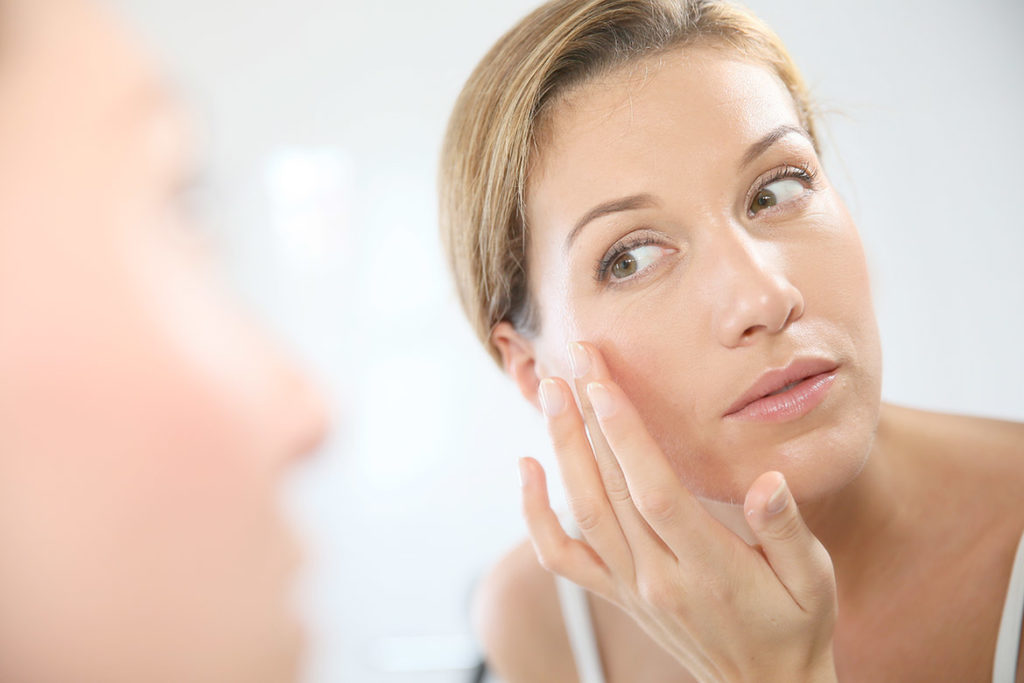Presented as one of the best anti-ageing molecules for many years, hyaluronic acid is found in many products. Cosmetics, food supplements, injections: it is everywhere, to the great pleasure of those who use it, because it is very effective. Discover its properties and benefits.
What is hyaluronic acid?
The hyaluronic acid molecule was discovered in 1934 by two researchers: Karl Meyer and John Palmer. They studied the vitreous humour of a bull’s eye and quickly realised the exceptional moisturising properties of this active compound.
Sometimes called hyaluronan, this molecule combines a particular form of uronic acid with an aminoglycan. This combination creates a sort of super water sponge that gives the skin a plump appearance and ensures a fresh complexion.
Naturally present in the body, hyaluronic acid, like collagen, tends to disappear over the years. It is estimated today that from the age of 50 onwards, it is reduced by half and is no longer renewed. This is one of the reasons why skin tissue dries out, becomes slack and wrinkles appear as we age.

The degradation of this active compound could be amplified and accelerated due to oxidative stress in the body, which is linked to the production of free radicals. These free radicals appear in the body for several reasons. Lack of exercise, poor diet and too much exposure to sunlight are most often responsible.
Is this inevitable? No. There are currently many synthesised formulas that can limit the effects of ageing and compensate for its effects. Aesthetic doctors are well aware of this and offer their clients treatments based on injections or creams containing hyaluronic acid which considerably improve the appearance of the epidermis of their face.
How is this miracle molecule obtained? It was first extracted from the crests of roosters, which were crushed and then chemically purified. This is no longer the case today. Most often, the hyaluronic acid found in food supplements, cosmetics or injection products comes from the fermentation of bacteria called « bacillus subtilis ».
A star molecule with many benefits
In cosmetic surgery, hyaluronic acid is commonly used as a treatment for the first signs of ageing of the facial skin tissue. It is effective in the form of an injection to fill in wrinkles and fine lines that gradually appear around the eyes and lips.
It captures water and holds it in the deep tissues and provides intense hydration. For this reason, the skin takes on a more youthful appearance. The skin is plumper, denser and the features are less drawn. This product can easily be combined with other products and enhances their benefits. It can be interesting to combine it with certain essential or vegetable oils for a tenfold effect.
Since the 1980s, medicine has proven that this acid has interesting healing properties. Used externally, in the form of cream or gel, but also internally, through injections or food supplements, it reduces the healing time in the case of wounds.
Ophthalmic medicine has been using it for many years to reduce the sensation of dry eyes and to promote tissue healing after cataract surgery or corneal transplantation.
More generally, hyaluronic acid, which is found throughout the human body and particularly in connective tissue, is also used to relieve chronic pain associated with osteoarthritis or rheumatism.
The different hyaluronic acid treatments
Hyaluronan is present in a large number of skin care products. Some of them can be used directly at home. These are usually creams or serums that contain a very high quality, high molecular weight hyaluronic acid. They are formulated to retain water on the surface of the skin and are very effective in erasing wrinkles and plumping the lips.
It is also found in masks or anti-ageing complexes. In masks, it is more strongly dosed. The treatment is therefore more intense. When added to a complex, it potentiates the benefits of the antioxidants and restructuring active ingredients that accompany it.
Specialists in cosmetic surgery use it mainly in the form of injections. In particular, there are mesotherapy treatments based on micro-injections of this active ingredient which considerably limit the effects of too frequent exposure to the sun during the summer season.
It is now also available in the form of a food supplement that promotes the radiance and youthfulness of the skin through an internal action.
Hyaluronic acid-based food supplements: a good idea?
What to do if you want to take care of your skin without going to the doctor? It may be a good idea to take hyaluronate in the form of food supplements.
The oral use of this active ingredient is much better than the local or cutaneous use, although the two complement each other very well. Internally, the body’s natural reserves are increased considerably and sustainably. You do more than just moisturise your skin.
Although hyaluronic acid is best known for its intensely moisturising action, which helps to reduce wrinkles, it is important to understand that when taken orally, its benefits go much further. When taken internally, it will repair and restructure the skin. The skin becomes brighter and literally younger from within.
The skin obviously benefits from the beneficial effects of hyaluronic acid-based food supplements, but it is not the only one. The joints and all the connective tissue around them, such as cartilage, are strengthened.
The benefits of hyaluronic acid, especially if taken orally, are numerous and interesting in many ways. This active ingredient promotes the radiance, elasticity and youthfulness of the skin, but it also enables the entire body to better fight against oxidative stress and ageing. Taking it as a food supplement is like taking a cure for youth!
